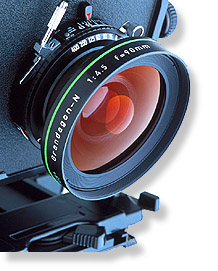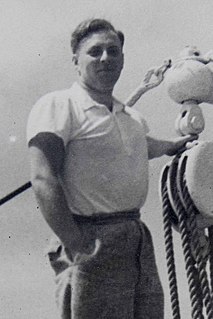
Photography is the art, application, and practice of creating durable images by recording light, either electronically by means of an image sensor, or chemically by means of a light-sensitive material such as photographic film. It is employed in many fields of science, manufacturing, and business, as well as its more direct uses for art, film and video production, recreational purposes, hobby, and mass communication.

A photograph is an image created by light falling on a photosensitive surface, usually photographic film or an electronic image sensor, such as a CCD or a CMOS chip. Most photographs are now created using a smartphone/camera, which uses a lens to focus the scene's visible wavelengths of light into a reproduction of what the human eye would see. The process and practice of creating such images is called photography.

A postcard or post card is a piece of thick paper or thin cardboard, typically rectangular, intended for writing and mailing without an envelope. Non-rectangular shapes may also be used but are rare. There are novelty exceptions, such as wooden postcards, copper postcards sold in the Copper Country of the U.S. state of Michigan, and coconut "postcards" from tropical islands.

A photographer is a person who makes photographs.

Photojournalism is journalism that uses images to tell a news story. It usually only refers to still images, but can also refer to video used in broadcast journalism. Photojournalism is distinguished from other close branches of photography by having a rigid ethical framework which demands an honest but impartial approach that tells a story in strictly journalistic terms. Photojournalists contribute to the news media, and help communities connect with one other. They must be well-informed and knowledgeable, and are able to deliver news in a creative manner that is both informative and entertaining.

A photo booth is a vending machine or modern kiosk that contains an automated, usually coin-operated, camera and film processor. Today, the vast majority of photo booths are digital.

A tintype, also known as a melainotype or ferrotype, is a photograph made by creating a direct positive on a thin sheet of metal coated with a dark lacquer or enamel and used as the support for the photographic emulsion. Tintypes enjoyed their widest use during the 1860s and 1870s, but lesser use of the medium persisted into the early 20th century and it has been revived as a novelty and fine art form in the 21st.

Erotic photography is a style of art photography of an erotic, sexually suggestive or sexually provocative nature.

In photography, toning is a method of changing the color of black-and-white photographs. In analog photography, it is a chemical process carried out on metal salt-based prints, such as silver prints, iron-based prints, or platinum or palladium prints. This darkroom process cannot be performed with a color photograph. The effects of this process can be emulated with software in digital photography. Sepia is considered a form of black-and-white or monochrome photography.

Francis Frith was an English photographer of the Middle East and many towns in the United Kingdom. Frith was born in Chesterfield, Derbyshire, attending Quaker schools at Ackworth and Quaker Camp Hill in Birmingham, before he started in the cutlery business. He suffered a nervous breakdown in 1843, recuperating over the next two years. In 1850 he started a photographic studio in Liverpool, known as Frith & Hayward. A successful grocer, and later, printer, Frith fostered an interest in photography, becoming a founding member of the Liverpool Photographic Society in 1853. Frith sold his companies in 1855 in order to dedicate himself entirely to photography. He journeyed to the Middle East on three occasions, the first of which was a trip to Egypt in 1856 with very large cameras. He used the collodion process, a major technical achievement in hot and dusty conditions.

Henry Hamilton Bennett was an American photographer famous for his pictures of the Dells of the Wisconsin River and surrounding region taken between 1865 and 1908. The popularity of his photographs helped turn the city of Wisconsin Dells, Wisconsin into a major tourist destination.

A real photo postcard (RPPC) is a continuous-tone photographic image printed on postcard stock. The term recognizes a distinction between the real photo process and the lithographic or offset printing processes employed in the manufacture of most postcard images.

Peter Lik is an Australian photographer best known for his nature and panoramic landscape images. He hosted From the Edge with Peter Lik, which aired for one season on The Weather Channel.

Julien Mandel was a Jewish photographer and filmmaker. He was one of the best-known commercial photographers of female nudes of the early twentieth century. He worked in Paris and his signature photography became known in the 1910s and was published through the mid-1930s by such firms as Armand Noyer, Les Studios, P-C Paris, and the Neue Photographische Gesellschaft.
Steve Mandel is an amateur astronomer and astrophotographer. He owns a small observatory, called Hidden Valley Observatory, in Soquel, California. He has been acknowledged especially for his wide-field photographs of the Milky Way nebulae and for public outreach, for which he has received Amateur Achievement Award of the Astronomical Society of the Pacific. Besides this he has also captured and published wildlife images of endangered animals. He works as an American communications coach for professional executives, and is the founder of the Mandel Communications Inc., which aims to teach effective communication and public speaking.

Bill Dane is a North American street photographer. Dane pioneered a way to subsidize his public by using photographic postcards. He has mailed over 50,000 of his pictures as photo-postcards since 1969. As of 2007, Dane's method for making his photographs available shifted from mailing photo-postcards to offering his entire body of work on the internet.

Rose Mandel was a Polish-born American photographer, who was awarded a Guggenheim Fellowship in 1967.
Mandel is a Dutch, German and Jewish surname, or any of several people with that surname.
Mike Mandel is an American conceptual artist and photographer. According to his artist profile, his work "questions the meaning of photographic imagery within popular culture and draws from snapshots, advertising, news photographs, and public and corporate archives."

Werner Haberkorn was a German-Brazilian engineer, photographer, and businessman. Haberkorn arrived in Brazil as an immigrant in the 1930s, accompanied by his wife Luise. Together with his brother, Geraldo Haberkorn, he founded one of the most important postcard companies in the country, Fotolabor. It produced thousands of postcards throughout the 1940s and 1950s, many of which were widely circulated. Haberkorn body of work allows the visualization of the urban transformation of the city of São Paulo in the mid-20th century.

















